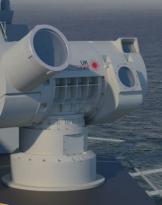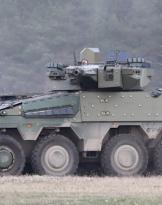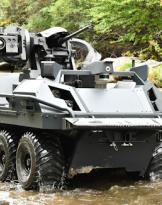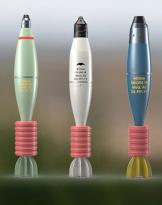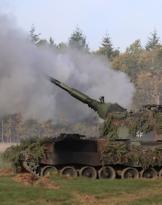On the occasion of the Salone Euronaval in Paris, which opened its doors today, Leonardo launched its new electro-optical system to protect naval assets from multiple threats. This is the DSS-IRST (Distributed Static Staring-InfraRed Search and Tracking System), a latest generation technology developed by the company to offer major naval units, such as the new LHD "Trieste" and the Multipurpose Offshore Patrol vessels (PPA) of the Italian Navy, the state of the art in terms of capabilities and performance against multiple surface threats, missile and air, long or short range, along the coastal areas (Littoral) and in the open sea (Blue Water).
In addition to the requirements of a traditional IRST system, the modular architecture of Leonardo's new product allows real 360 ° coverage through the placement of four mechanically stabilized static (non-rotating) search heads (Search Head Unit-SHU). Lightweight and compact, the SHUs offer high resolution performance, coupled with an azimuth range of 90 ° each. The new generation IRST is also equipped with three additional electro-optical units (EO) (Directional Head Unit-DHU) for the confirmation of the acquired traces - an element that allows the system to minimize false alarms (False Alarm Rate) - , the identification of the targets, as well as (with the collaboration of the SHU) the active and passive measurement of their distance.
In particular, thanks to the new hardware and software technologies it is equipped with, the result of Leonardo's continuous investments in key domains, such as Artificial Intelligence, autonomous systems, processing of large amounts of data and information management, the DSS-IRST is capable of simultaneously discovering and tracking symmetrical (sea skimming missiles) and asymmetrical (MPADS, small boats) targets, automatically applying the best algorithm according to the type of scenario.
The DSS-IRST has been designed to be the main support for navigation and maritime situational awareness, even if the naval unit on which it is integrated is operating in silent mode (EMCON). Even in this case, in fact, the system is capable of providing 360 ° 24h / 24h IR panoramic HD videos with a cinematic-quality resolution (frame rate) and maintaining the operational capacity of discovery and tracking of multiple targets, generating 3D traces for the CMS, thanks to its passive measurement of the distance to the target (Passive Ranging). Furthermore, given the possibility to modify the elevation of the SHUs, the DSS IRST can also be used to support Search And Rescue (SAR) operations or for Harbor Surveillance anti-intrusion.
In addition to the four Search Head Units and the three Directional Head Units, Leonardo's Distributed Static Staring-InfraRed Search and Tracking System is mainly composed of two Data and Video Management Units and the Local Console Unit (optional). In its typical configuration, the system, designed to meet the new multi-domain needs of naval forces, operates integrated into the ship's Combat Management System (CMS).
In the field of electro-optical technologies, Leonardo supplies high-performance products, capable of responding to the most stringent operational requirements, thanks to its expertise in the research and development of key elements of EO systems, including infrared detectors, stabilizers and algorithms for image processing. The company also boasts a consolidated experience in the integration of EO components on ships, land vehicles and avionics platforms.
Leonardo's complete solutions for the maritime domain include Command and Control systems, effectors, sensors, underwater, optronic, communication systems, aircraft, helicopters and unmanned platforms. With its technologies, the company is able to meet all mission requirements for all types of naval units, classes and tonnages.






